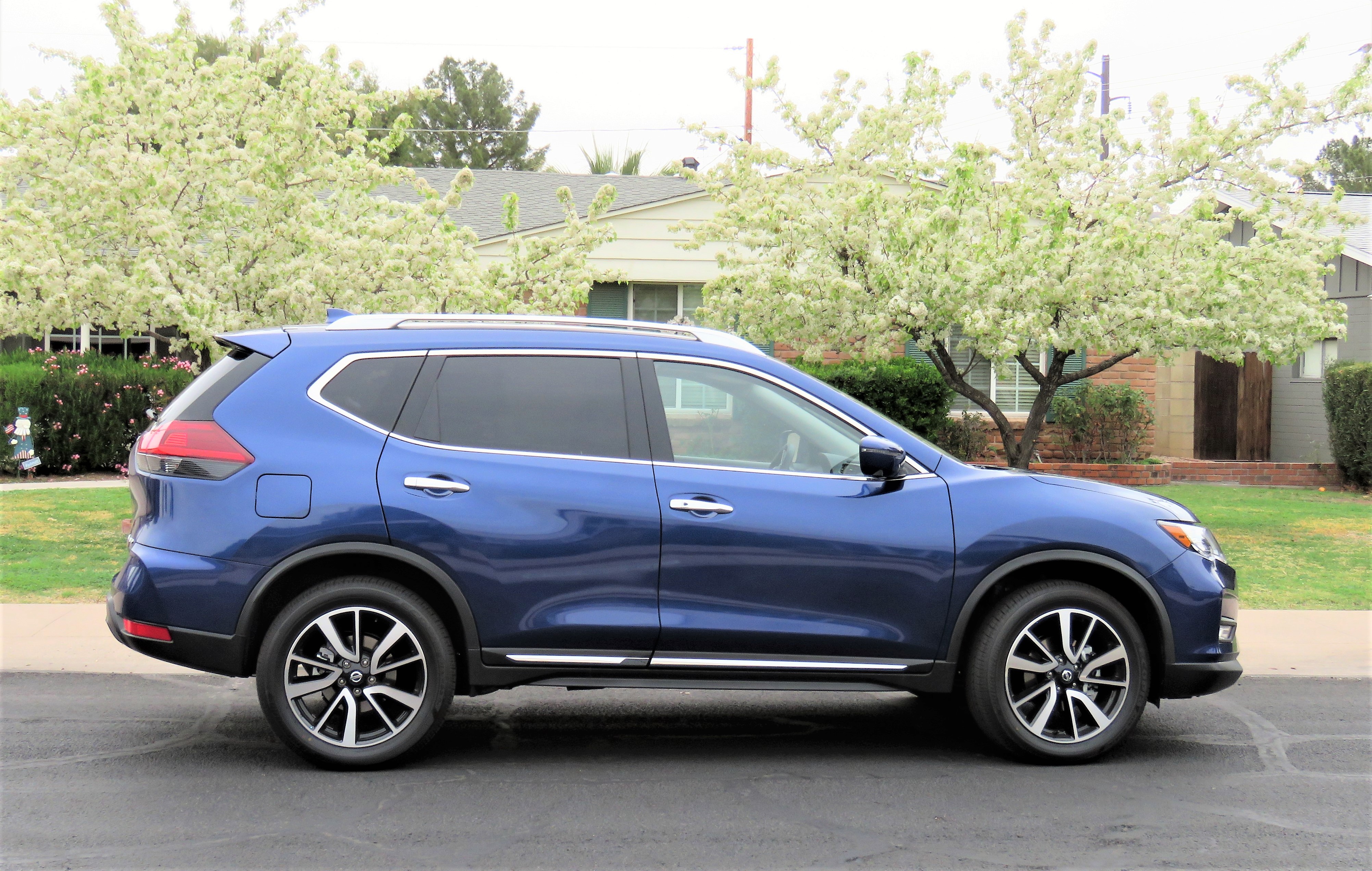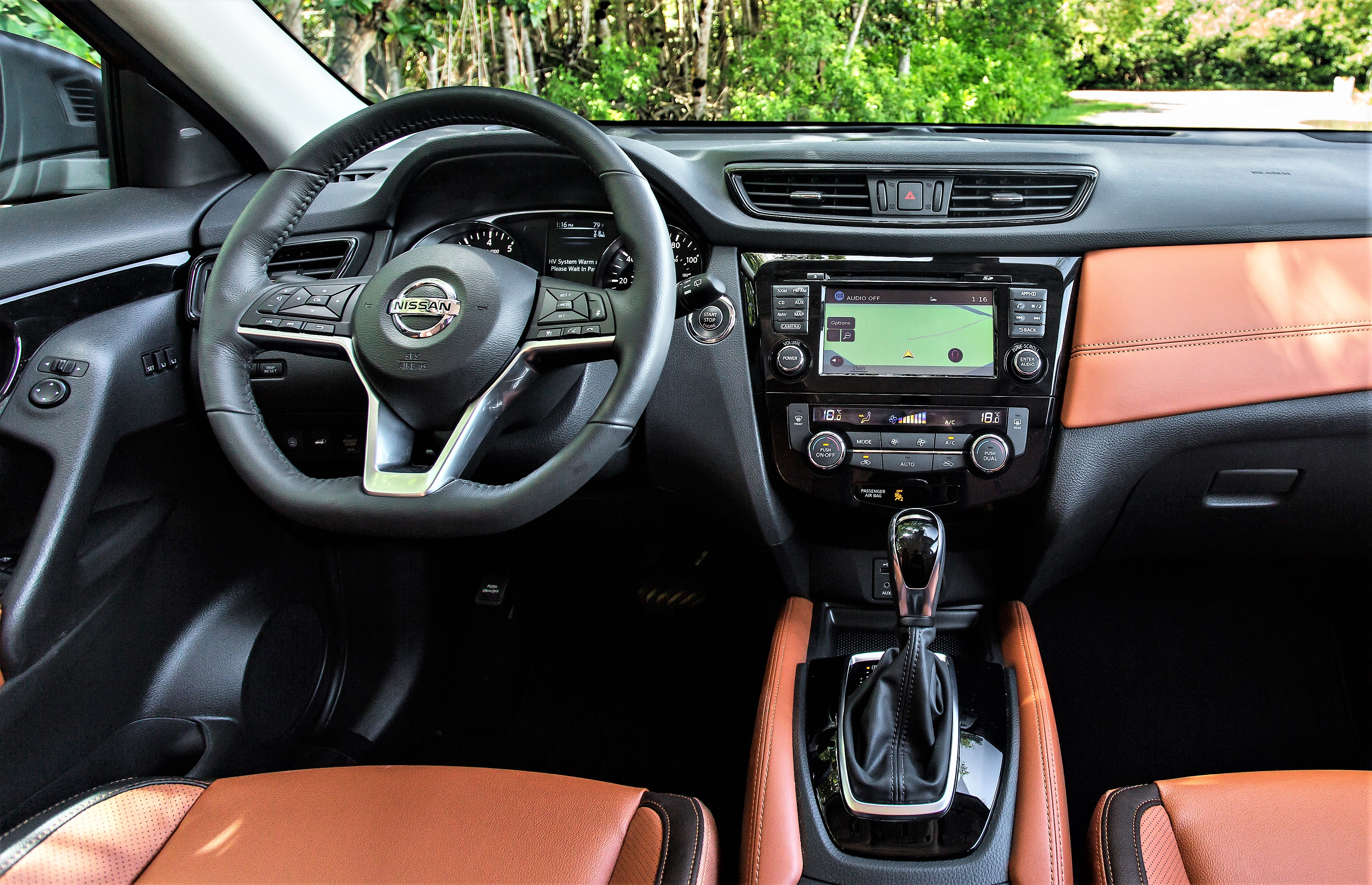While going rogue might not be the best course of action in your personal life, going Rogue has had a great deal of positive effect on the Nissan brand. The Rogue compact crossover reigned as Nissan’s best-selling nameplate during 2017 and looks to repeat that success this year, as well as being one of the leading crossovers in the hottest segment of the automotive market.
Rogue seems to have hit the sweet spot for families or anyone else who wants a vehicle that is practical, economical, roomy for its size and reasonably nice to drive. Rogue received a facelift and some tech updates for last year’s model, which continue for 2018.

My editing partner Larry Edsall and I drove a Rogue from Phoenix to Monterey, California, a couple of years back, and while loaded up with a week’s worth of gear, it handled the lengthy road trip with flying colors. That’s high praise from a pair of picky auto-writing veterans.
The big news for the 2018 Nissan Rogue is the optional addition of ProPilot Assist, which combines the technologies of lane-departure control and adaptive cruise control to allow the driver to lean back and relax while the Rogue takes over the controls. The system provides a taste of the self-driving car of the probable near future, although it’s not quite there yet, as Nissan readily admits in its own instructions.
ProPilot is engaged with the push of a blue button on the steering wheel, along with setting the desired speed, and Rogue does the rest. The system is set up to provide the driving assistance at highway speeds on roads with marked lanes, but when there is traffic, the radar-controlled adaptive cruise control allows you to drive in traffic by automatically adjusting the car’s speed down to whatever is ahead of you so you essentially never have to hit the gas or brakes.

The system will even apply the brakes and bring you to a complete stop, if needed. That’s a pretty great safety feature, especially with the prevalence of rear-enders caused by distracted drivers messing with cellphones and dashboard displays. Nissan just announced that all 2019 Rogues will be equipped with automatic emergency braking as standard equipment.
The main difference between ProPilot Assist and an autonomous driving vehicle is that the driver is required to keep at least one hand on the wheel while the system is engaged, which in my view defeats the purpose of having the car steer itself.
Since you have to be hands on and, presumably, alert for any driving situation that ProPilot can’t manage, then why not just steer it yourself? There does not seem to be any major advantage here.

Leave your hands off the wheel for too long, and the system squawks and flashes warnings to get them back on. If you ignore the warnings, the system will tap the brakes to try to wake you up, and if that doesn’t work, it will turn on the flashing hazard lights to warn other drivers that something’s gone wrong in here, and then bring the Rogue to a stop in its lane.
That’s an admirable feature in the event of a driver falling sound asleep or having some kind of medical emergency. Rather than just letting the car run off the road, it takes action to mitigate the situation. Some luxury vehicles have similar alert systems, but watch for this kind of technology eventually coming to all vehicles.
As for ProPilot’s performance, I sampled it on a variety of open roads, including freeways, major two-lane roads and back roads. Most interesting was how you could feel the steering wheel move under your hand all by its disembodied self.

But while ProPilot seemed adept at keeping the Rogue centered in its lane while on straight roads, it was not all that proficient in keeping the Rogue tracking properly in curves. Good thing my hand was on the wheel because I needed to override the system quite a few times as the car wandered too far to the outer edge of its lane, getting too close to other traffic, guardrails and such.
Each time, I waited as long as I could stand to correct the direction, which in a few instances got pretty dicey.
The adaptive cruise control, on the other hand, worked very well, keeping the car on pace with the vehicle ahead in a seamless fashion. This makes for relaxed driving on highways with a lot of traffic that’s speeding up and slowing down since you don’t have to bother with adjusting your speed or continuously resetting the cruise control.
I’ve used adaptive cruise control on a number of test vehicles, and some work better than others. This is one of the better systems.
I did not sample the automatic stopping feature; I’d rather just take their word for it.

So ProPilot is something of a mixed bag. It’s a good effort by Nissan to combine these advanced driving aids for both safety and driving ease, but the self-steering could use some work. There remains a leap between steering ourselves and allowing the vehicle to do all the steering for us, and while ProPilot attempts to bridge that gap, it does not quite cut it.
Beyond the ProPilot feature, the top-grade Rogue SL that I drove proved to be right up to snuff with the compact crossover competition. It drives very well, with enough power generated by its 170-horsepower V6 and continuously variable XTronic automatic transmission. The premium interior is comfortable and fitted with a number of desirable tech features, most of them engaged via a 7-inch video screen.
There are also such thoughtful features as a compartmentalized cargo area for stowing your stuff out of sight.
Rogue prices start at around $24,000 for the base model, and most additional features are included as part of the various trim levels. Among the all-wheel-drive SL model’s equipment were Nissan Connect navigation and entertainment, a fine Bose audio system, Active Ride Control, motion-activated liftgate, Intelligent AroundView Monitor and a number of other driving, comfort and safety features.
On the tester, ProPilot was bundled into a $790 Platinum package, which also included 19-inch alloy wheels and electric parking brake. Other added options were the Premium package of panoramic sunroof and LED headlights, $1,820; tan leather-appointed seats with quilted inserts, $250; floor and cargo mats, and a first-aid kit, $275; and shipping, $975.
2018 Nissan Rogue SL AWD
Vehicle type: five-passenger, five-door crossover, all-wheel drive
Base price: $32,410 Price as tested: $36,520
Engine: 2.5-liter inline-4, 170 horsepower at 6,000 rpm, 144 pound-feet of torque at 4,400 rpm Transmission: Continuously variable automatic
Wheelbase: 106.5 inches Overall length/width: 184.5 inches / 72.4 inches
Curb weight: 3,659 pounds
EPA mileage estimates: 25 city / 32 highway / 27 combined
Assembled in: Kyushu, Japan





